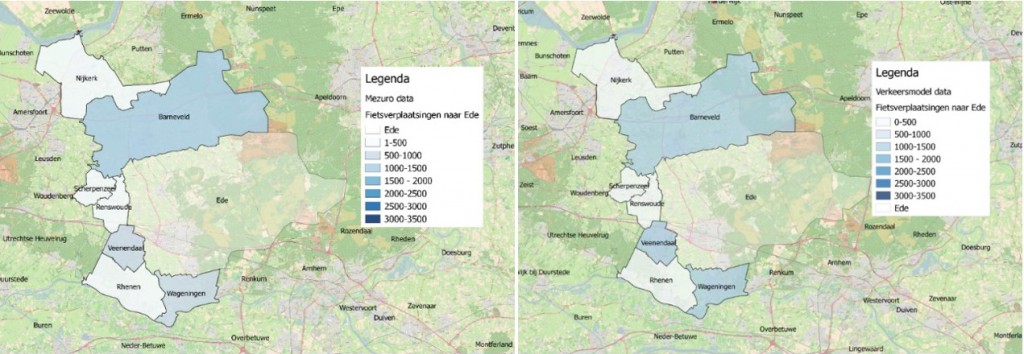GSM data gives insights on cycling behaviour
13 December 2016
The province of Gelderland has, like many other regions in the Netherlands, poor bicycle data. The GSM data from our partner Mezuro/Vodafone can increase our understanding of cycling behaviour. Decisio brought the GSM bicycle data streams on the map in a pilot project in the city of Ede.
Pilot: research on application possibilities
The purpose of the pilot was to investigate the possible applications and the reliability of mobile phone data. The Food Valley (Valleiregio) was therefore chosen as a pilot area. In two workshops, we have been working closely with the Advisory Board which were represented by different departments of the province of Gelderland.
Average number of bicycle trips per weekday to Ede
Combination of data sources
Through the GSM data and the comparison with several other data sources, we have concluded that these are generally consistent. Due to different measurement points and definitions, the absolute numbers do not always match. However, the relations are often comparable and the differences logically explainable. An important conclusion is that all the data sources are different and thus more or less suitable for different applications.
GSM data brings actual movements in the picture
GSM data has the advantage that actual trips are measured instead of being calculated or based on statistical data. Trips data from the cell phone are plausible. An important point regarding the application possibilities of the origin / destination matrices from GSM data is that there is an underestimation of the short distances (within residences in the valley region). This applies, to a lesser extent, to daily commuting or home-school trips. This makes the data less applicable, for example, at the level of single shopping centres located close to each other. The contrast of Mezuro data is useful when the actual number of trips is more important than the expected or calculated trips. For example, when assessing the movements on new cycle routes across greater distances. The data is also suitable to monitor (the development of) movements during the day, week, months or even years. Finally, GSM data can be used for other purposes. For example, to analyse the behaviour of residents, shopping trips, tourism and the attractiveness of cities or measuring the attendance to events.
More information
For more information about the project or what Decisio can do for you in terms of application of cell phone data, contact Kees van Ommeren (c.vanommeren [at] decisio.nl) and Daan van Gent (d.vangent[at]decisio.nl). You can also call via 020-6700562.

